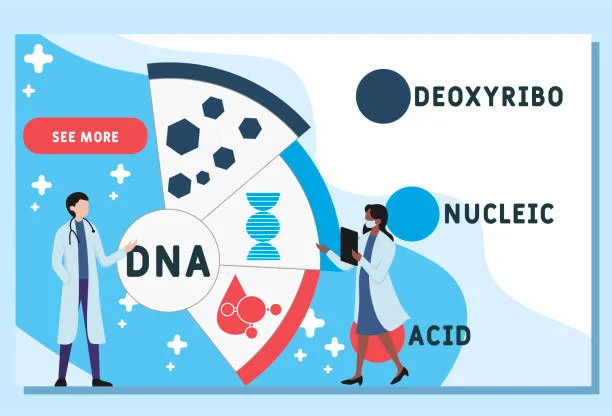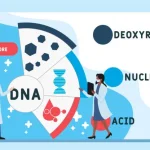A DNA health report can look intimidating at first. Rows of letters, percentages, and medical terms that seem to speak another language. Beneath that clinical surface, however, lies something deeply human. Each line of data reflects how the body repairs, recovers, and responds to the world.
A dna genetic test turns that invisible code into something readable. It translates biology into awareness. What was once locked in a laboratory now fits into a few pages that describe how genes quietly influence daily health.
Understanding those pages is less about science and more about curiosity.
Unlock fresh insights—tap here to read our most engaging related post now today!
Where to Begin with the Data
The first part of most reports lists genes, variations, and categories such as “predisposition” or “carrier status.” These terms form the language of genetics.
Predisposition means possibility, not fate. It shows where genes may lean toward certain outcomes. That information is a guide, not a guarantee. Diet, movement, sleep, and environment often decide whether a gene remains silent or becomes active.
The idea is not to predict illness but to prevent it. That small difference changes everything.
The Meaning Behind Carrier Status
Another section is called carrier status. It identifies when someone carries one copy of a gene variation that could lead to a condition if paired with another copy. Carriers rarely show symptoms themselves.
This information is not meant to alarm. It helps in family planning and offers awareness about what may run in a genetic line. Knowledge turns uncertainty into calm readiness.
The goal is not to label, but to understand how traits travel through generations.
Risk Scores and What They Represent
DNA health reports often include polygenic risk scores. These are calculated from hundreds of small variations, each contributing a small effect. When combined, they estimate the body’s tendency toward certain conditions like heart disease, insulin resistance, or inflammation.
A high score does not predict illness. It means that prevention deserves extra focus. If inflammation appears elevated, for example, lifestyle strategies that reduce stress and improve sleep can make a difference.
Risk scores highlight direction, not destiny.
Lifestyle as the Balancing Force
Genes are fixed, but their expression is not. Modern reports often include sections on how lifestyle interacts with genetics.
A person with a slow caffeine metabolism gene might sleep better by avoiding coffee after midday. Someone with lower vitamin D receptor activity may benefit from more sunlight.
The report connects small daily actions to long-term outcomes. It shows that prevention is not abstract. It lives in ordinary habits.
What Methylation Really Tells
Many reports include methylation analysis. Methylation is the body’s internal regulator. It controls how genes switch on and off, influencing detox, repair, and energy.
When methylation works efficiently, the body maintains balance easily. When it struggles, signs appear as fatigue or slow recovery. The dna genetic test highlights these differences so that nutrition or supplements can be adjusted.
This is where genetics meets nutrition directly. Food becomes part of the body’s language of repair.
The Human Side of Reading Results
For some, a DNA report brings relief. For others, it raises concern. Both reactions are normal.
Information about risk or variation is emotional because it touches identity. Yet a report is not a verdict. It is perspective. It gives permission to act sooner, with knowledge instead of guesswork.
Once the data becomes familiar, fear fades and awareness grows. That shift from uncertainty to understanding is where confidence lives.
Why Expert Guidance Still Matters
Even with advances in technology, interpretation remains essential. Most reports include plain-language summaries, but a clinician or genetic counsellor provides clarity that software cannot.
An expert can explain which results matter most and which are minor. They connect the data with lifestyle, medication, or nutrition. A short consultation often transforms a static report into a useful plan.
The science becomes human again when it meets context.
Australia’s Work in Genomic Education
Australia continues to lead in public genomic literacy. Initiatives such as OurDNA create resources that help communities understand genetic testing responsibly. Their work encourages the use of genomics as a tool for prevention rather than a source of anxiety.
This approach keeps the science personal and compassionate. It ensures genetic insight serves health rather than confusion.
The more accessible this information becomes, the more effectively it shapes national wellbeing.
Learning the Rhythm of the Report
A DNA report is best read slowly. Each section adds one layer to a larger story. Predispositions show where care should focus. Carrier status explains inherited traits. Risk scores and methylation reveal how the body handles daily stress.
By the final page, the pattern becomes clear. The body has been speaking this whole time, only in a language that technology now makes readable.
The dna genetic test is not about control. It is about awareness. It offers a chance to know what the body needs before problems begin.
Conclusion: What the Future of Reading DNA Looks Like
A DNA health report in 2026 feels less like science fiction and more like self-reflection. It is the body sharing its own instruction manual.
Understanding it does not mean predicting everything that might happen. It means learning how to live in partnership with what is already written. Genes offer direction. Lifestyle writes the rest of the story.
Health is no longer only about detecting illness. It is about decoding potential, one quiet signal at a time.
FAQs
Q1: What is a dna genetic test?
It analyses specific gene variations to reveal how the body processes nutrients, responds to stress, and manages risk.
Q2: What does carrier status mean in a report?
It indicates possession of one gene variation that can be passed on without showing symptoms.
Q3: What are polygenic risk scores?
They combine small genetic effects from multiple genes to estimate overall health tendencies.
Q4: Why does methylation matter?
It regulates energy, repair, and detox processes that influence long-term wellbeing.
Q5: How is genetic data used responsibly?
Certified providers and initiatives like OurDNA ensure privacy, education, and ethical testing standards.
Don’t miss this highlight—our featured post delivers powerful tips you’ll love reading!







